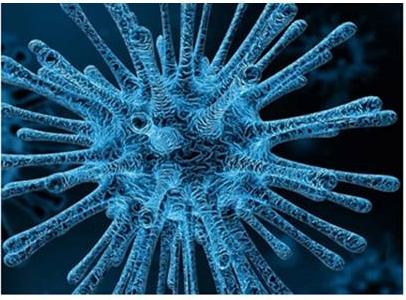|
DIVULGAÇÃO
Structure of a key coronavirus protein determined. Mei Hong, Massachusetts Institute of Technology (MIT), Cambridge, MA, USA, and colleagues have determined the molecular structure of a protein found in the SARS-CoV-2 virus. This envelope protein E forms a cation-selective channel and plays a key role in the ability of the virus to replicate itself and stimulate the host cell’s inflammation response. The researchers assume that blocking this channel disrupts virus replication and thus reduces the pathogenicity of the virus.  Credits: Wiley-VCH GmbH
The SARS-CoV-2 E protein is different from adequate ion channel proteins of influenza and HIV-1 viruses. The M2 protein of influenza viruses is much more mobile and forms a much narrower channel. The Vpu protein of HIV-1 has a much shorter transmembrane helix and a wider pore. The scientists are currently investigating the effects of these differences. In the SARS-CoV-2 E protein, the team has found several amino acids at one end of the channel that could attract positively charged ions such as calcium into the channel. The drug amantadine, which is used to treat influenza, and hexamethyleneamiloride, which is used to treat high blood pressure, can block the entrance of the E channel. However, both drugs bind only weakly to the E protein. The researchers suspect that stronger E inhibitors are potential drug candidates for treating Covid-19. Chemistry Views. Posted: Nov 14, 2020.
|
||||||||||||||||||||||||